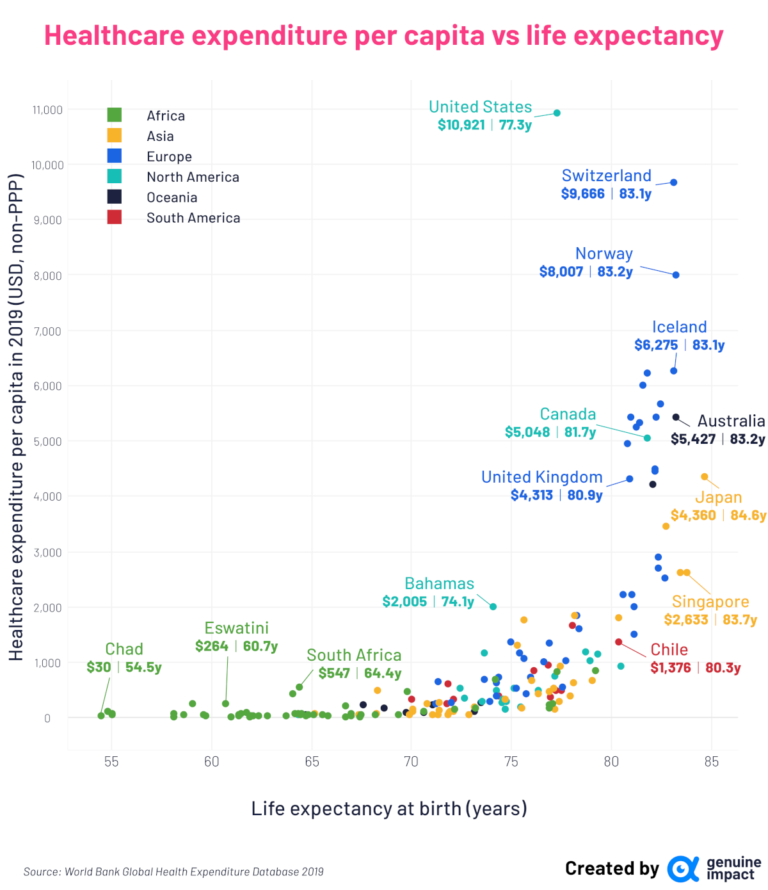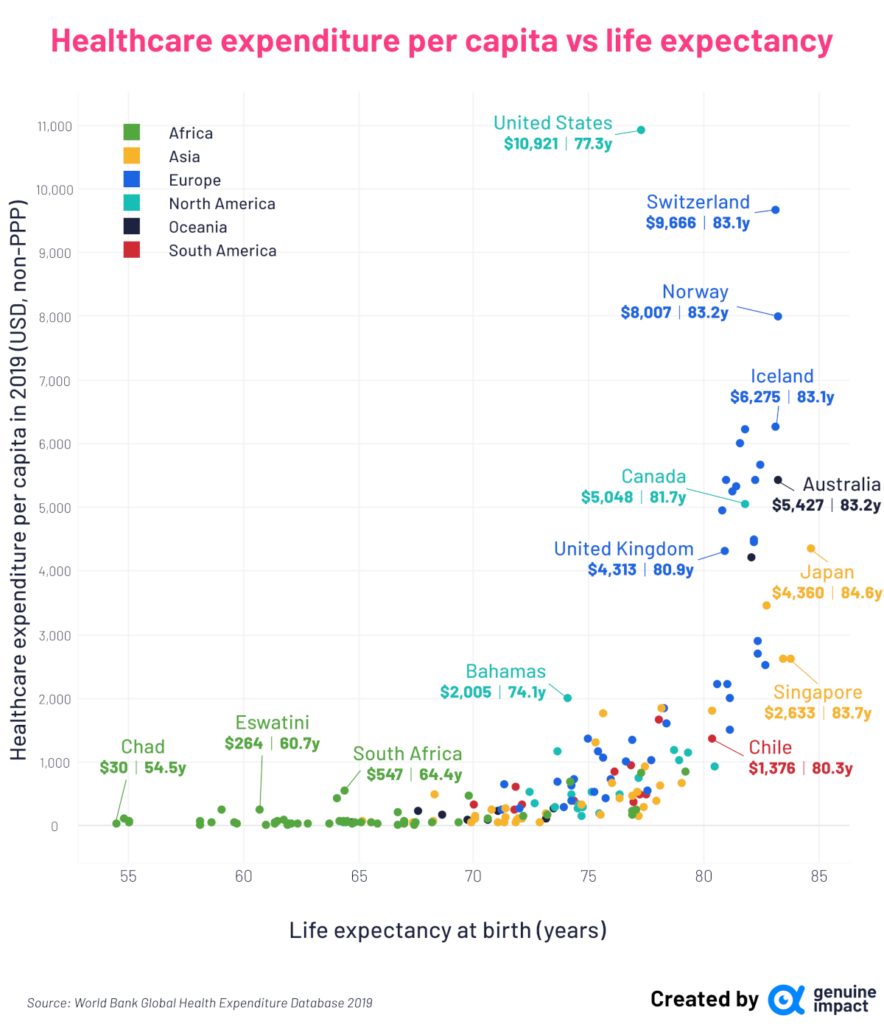
In the past century, advancements in medical fields like sanitation, vaccination, and preventive healthcare have led to a significant increase in global life expectancy at birth.
However, variations in life expectancy persist across different countries, prompting an exploration into potential explanations. Truman Du, using data from the World Bank, suggests that healthcare spending could play a role in this disparity.

Examining data encompassing 178 countries, the analysis reveals a correlation between healthcare spending per capita and average life expectancy. Notably, countries with higher healthcare expenditures tend to enjoy longer average lifespans, especially up to around 80 years.
For instance, countries such as Japan, Singapore, and South Korea, despite relatively low per capita spending, exhibit remarkable longevity. In contrast, the United States, despite being the top spender, experiences an average life expectancy of 77 years, potentially due to factors like elevated infant mortality and higher rates of violence among young adults.
Interestingly, historical trends also offer insights. Countries like Japan and South Korea have undergone substantial increases in life expectancy over the past six decades, moving from being among the lowest to some of the highest in terms of longevity.
However, significant disparities persist, particularly in Africa, Asia, and Oceania, where several nations lag in terms of life expectancy.
As longevity continues to increase, speculation arises about how high average life expectancies could reach in the future. Recent research in Nature Communications suggests that, given favourable conditions, the human lifespan could potentially extend to 150 years.

United Nations projections indicate varying life expectancy growth rates between developed and developing regions, yet the gap is expected to narrow over time.
In summary, a clear link between healthcare spending and average life expectancy emerges from the analysis of global data. While progress has been made, challenges remain in bridging the gap in longevity disparities across different nations.